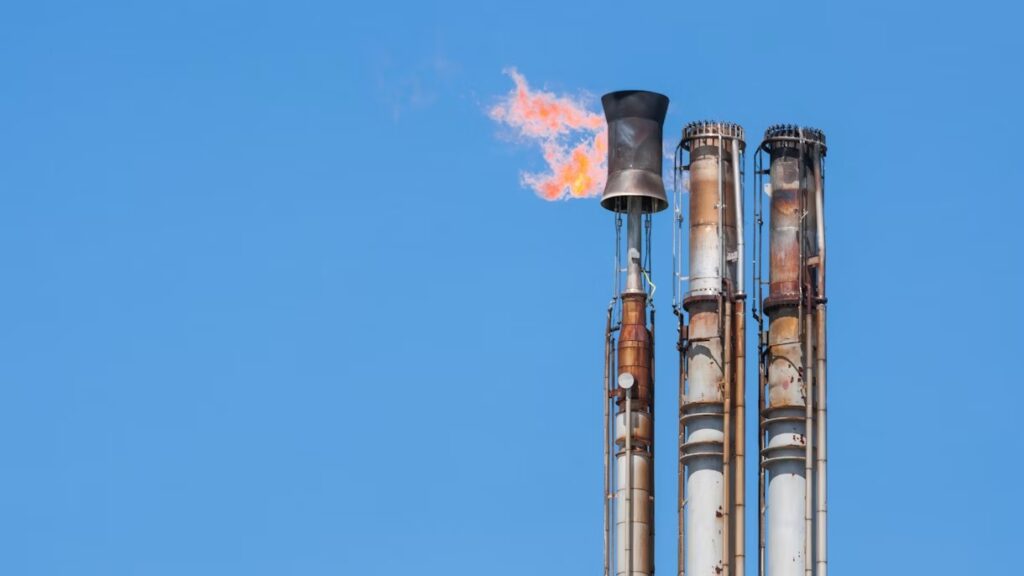A methane leak in Algeria was detected using satellite technology, showing up as a purple blob on a computer screen in Paris. The leak was traced to the Hassi Messaoud oil field by experts from the International Methane Emissions Observatory (IMEO), part of the United Nations Environment Programme (UNEP). Although the leak had been known in scientific circles, IMEO aims to make such data actionable for decision-makers.
They alerted the Algerian government and the national oil company, presenting their findings in a training session. Within a few months, the leak was stopped, equivalent to removing 500,000 cars from the road for a year.
The situation demonstrates how technology is aiding in reducing methane emissions, a potent greenhouse gas responsible for approximately 30% of global warming. However, experts stress that much more needs to be done to prevent methane releases. Manfredi Caltagirone, head of the International Methane Emissions Observatory (IMEO), emphasizes the need for countries to turn their ambitions into targeted and verifiable actions. Currently, atmospheric methane levels are roughly 2.5 times higher than pre-industrial levels and continue to rise.

Methane reduction is a key focus at the ongoing UN Climate Change Conference (COP29). Host country Azerbaijan is pushing for reductions in methane emissions from waste and food systems, which account for about 20% of emissions. Additionally, other participants are expected to advocate for cuts in the energy sector, which has significant potential for rapid and cost-effective emission reductions.

Established in 2021, the United Nations Environment Programme’s International Methane Emissions Observatory (IMEO) collects methane-related data from various sources, including company reports, peer-reviewed studies, and government disclosures. A critical component of IMEO is the Methane Alert and Response System (MARS), the first global satellite detection and notification system for large methane emissions.
Since its launch in 2023, MARS has alerted decision-makers to over 1,200 major emissions events worldwide.
Despite technological advances making methane data more accessible, UNEP’s report at COP29 shows methane emissions continue to rise.

Methane leaks cost the oil and gas industry billions annually, and although 40% of these emissions could be mitigated at no net cost, substantial progress has yet to be made.

Drew Shindell, Chair of the UNEP-convened Climate and Clean Air Coalition Scientific Advisory Panel, suggests
This is partly due to a lack of awareness about the scale of emissions and potential cost savings from mitigation.
Governments are taking action; for example, Nigeria is introducing a methane fee. The European Union is also working on a “methane border adjustment” using satellite data to assess the methane footprint of imported oil and gas. Technological advancements, including satellite monitoring, are playing a crucial role in efforts to reduce methane emissions.
Despite efforts, large-scale reductions in methane emissions have yet to be realized. The Global Methane Pledge, launched three years ago to cut methane emissions by 30% from the 2020 level by 2030, has seen 156 countries sign on. However, less than one-third have detailed their reduction strategies, according to the International Energy Agency.
Drew Shindell, Chair of the UNEP-convened Climate and Clean Air Coalition Scientific Advisory Panel, notes that
while ambitions are high, actual progress remains limited, mirroring the situation with carbon dioxide pledges.

The 29th session of the United Nations Climate Change Conference (COP29) is underway in Baku, Azerbaijan, from 11 to 22 November.

The conference aims to drive action on climate change by reducing emissions and halting global warming. Live updates can be followed on UNEP’s climate action feed.
UNEP supports the Paris Agreement goal of keeping global temperature rise below 2°C and aiming for 1.5°C. To achieve this, UNEP has developed the Sectoral Solution, a roadmap to reducing emissions across six key sectors: energy, industry, agriculture and food, forests and land use, transport, and buildings and cities. This holistic approach is essential for attaining stability and meeting international climate commitments.

